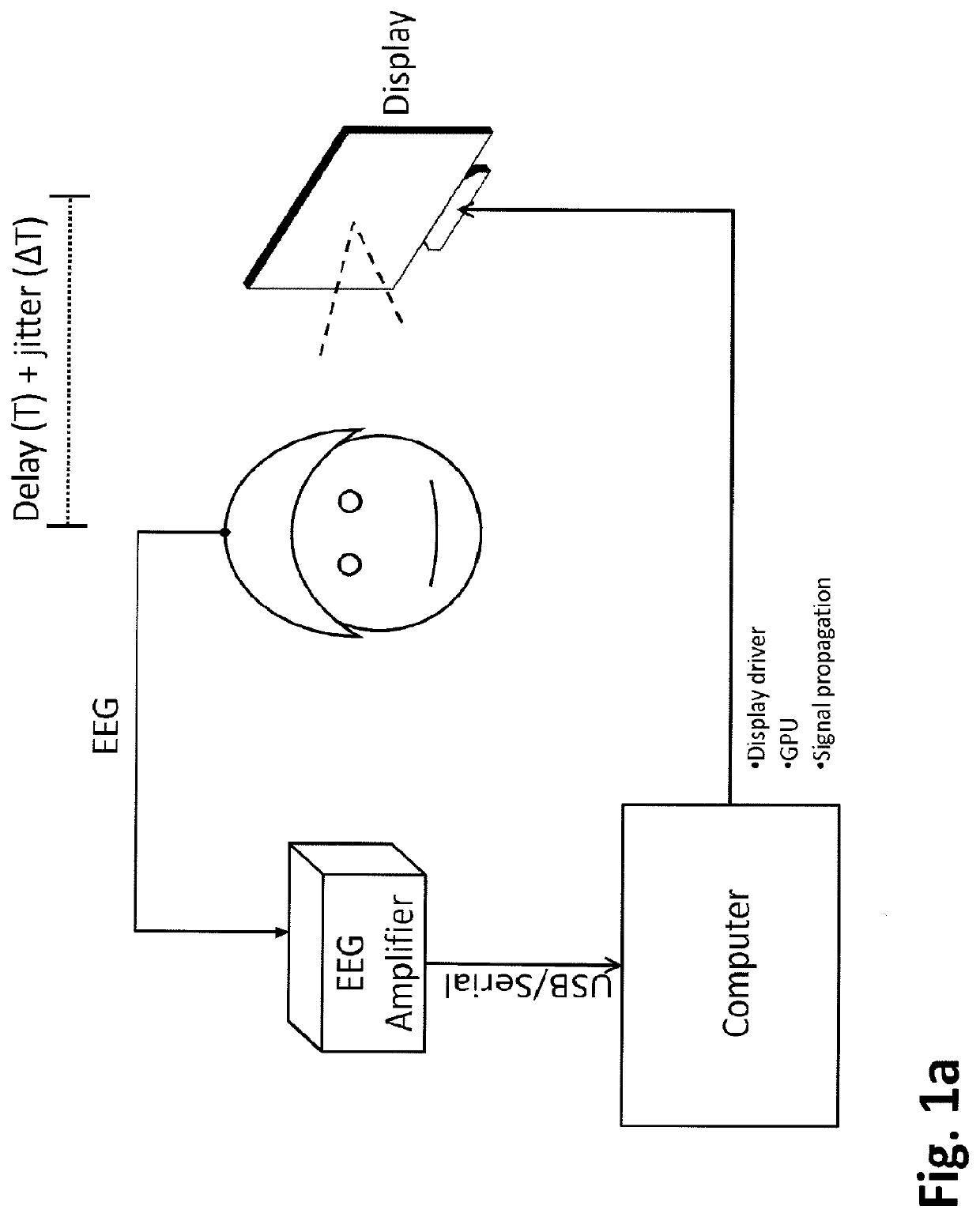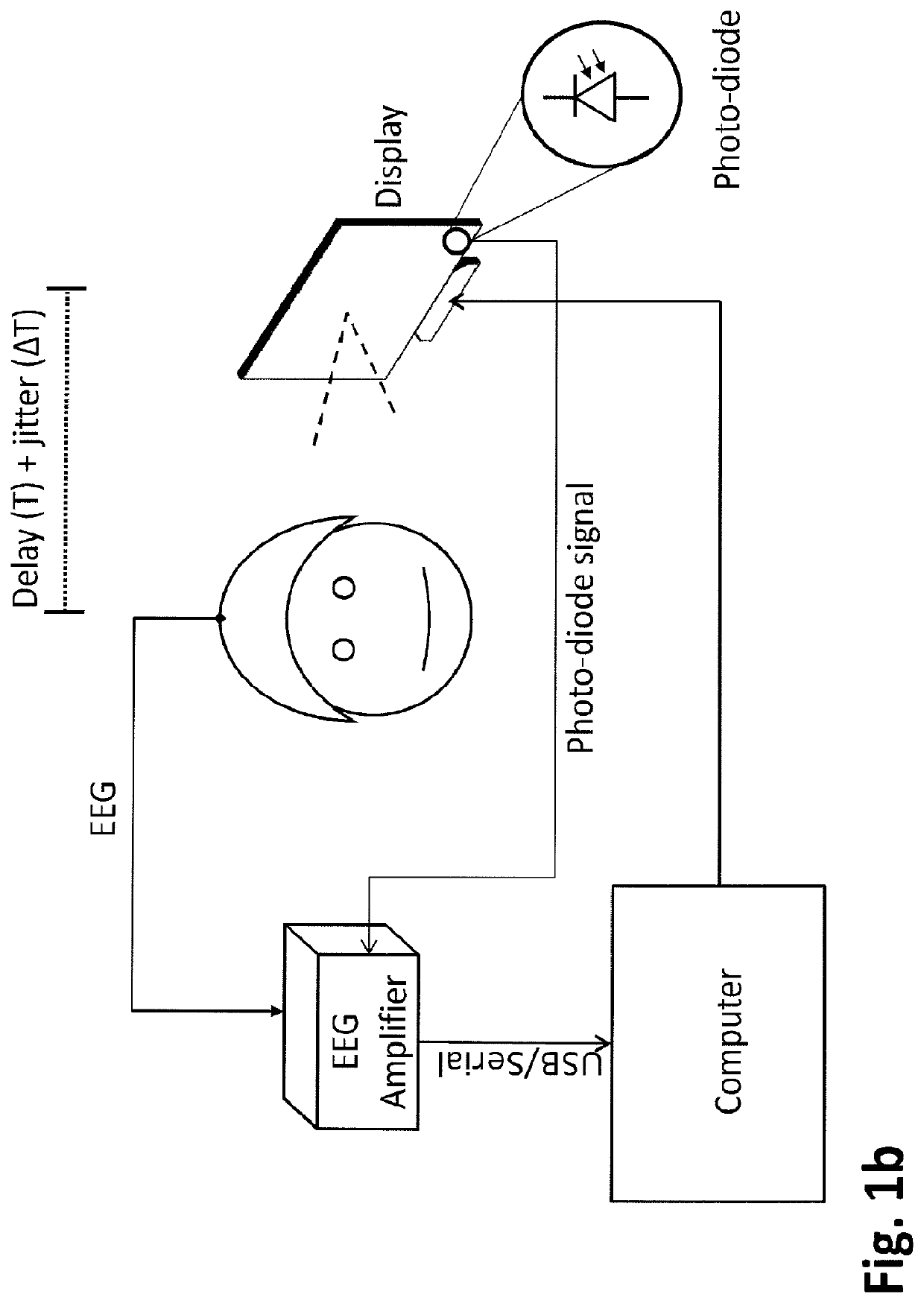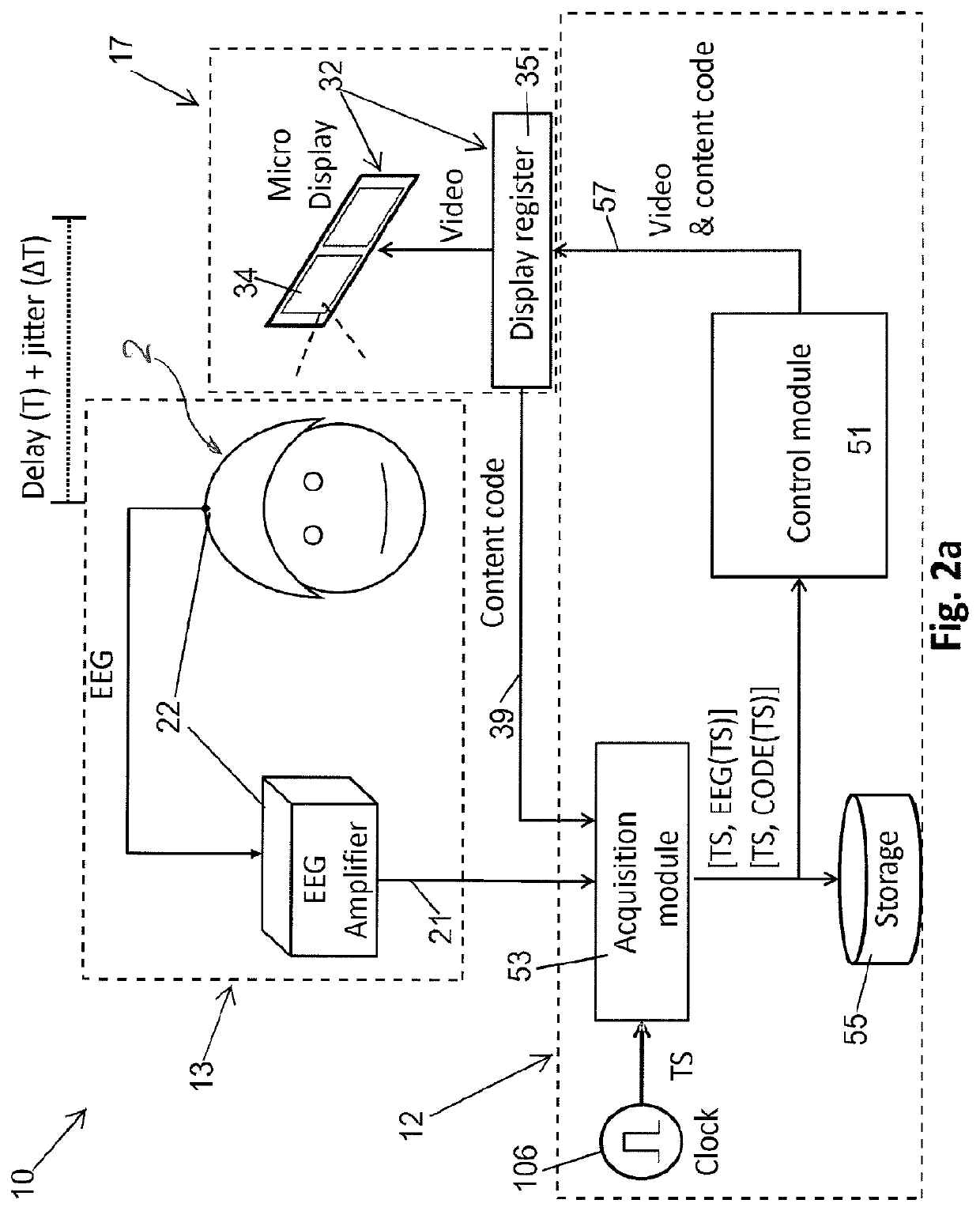Brain activity measurement and feedback system
a technology of brain activity and feedback system, which is applied in the direction of instruments, diagnostic recording/measuring, optical elements, etc., can solve the problems of not being able to adapt to diagnosis or treatment, presenting a risk to the patent, and being difficult to wear, so as to achieve convenient and comfortable wear and simple use
- Summary
- Abstract
- Description
- Claims
- Application Information
AI Technical Summary
Benefits of technology
Problems solved by technology
Method used
Image
Examples
example 1
Operation of System (10) in Exemplary “Reach an Object” Task
[0184]In this particular example an object 110, such as a 3D disk, is displayed in a VR environment 112 to a user. The user is instructed to reach to the object using a virtual arm 114 of the user. In the first instance the arm 114 is animated based on data from the skeletal tracking module 16 derived from the sensors of the position / motion detection system 16. In the second instance, wherein there is negligible or no movement detected by the skeletal tracking module 16, then the movement is based data relating to intended movement from the physiological parameter processing module 52 detected by the physiological parameter sensing system 14, and in particular the data may be from the EEG sensors 22 and / or EMG sensors 24.
[0185]FIGS. 7 and 8a-8g describe the process in more detail. At stage 1 in FIG. 7, a user, such as a patient or operator, interfaces with a user input of the exercise logic unit 84 of the VR generation modu...
example 2
Hybrid Brain-Computer Interface with Virtual Reality Feedback with Head-Mounted Display, Robotic System and Functional Electrical Stimulation
[0194]Objective: To provide optimal training for patients with upper movements movement deficits resulting from neurological problems (e.g., ALS, stroke, brain injury, locked-in syndrome, Parkinson disease etc.). These patients would require training to reintegrate the lost / degraded movement function. A system that reads their intention to make a functional movement and provide an assistance in completing the movement could enhance the rehabilitation outcome.
[0195]For this purpose, the system could exploit Hebbian learning in associating brain's input and output areas in reintegrating the lost movement function. The Hebbian principle is “Any two systems of cells in the brain that are repeatedly active at the same time will tend to become ‘associated’, so that activity in one facilitates activity in the other.”
[0196]In the present example, the t...
example 3
Brain Computer Interface and Motion Data Activated Neural Stimulation with Augmented Reality Feedback
Objective
[0226]A system could provide precise neural stimulation in relation to the actions performed by a patient in real world, resulting in reinforcement of neural patterns for intended behaviors.
Description
[0227]Actions of the user and that of a second person and objects in the scene are captured with a camera system for behavioral analysis. Additionally neural data is recorded with one of of the modalities (EEG, ECOG etc.) are synchronized with IMU data. The video captured from the camera system is interleaved with virtual objects to generate 3D augmented reality feedback and provided to the user though head-mounted display. Finally, appropriate neural stimulation parameters are generated in the control system and sent to the neural stimulation.
[0228]For delay and jitter between users behavioral and physiological measures and neural stimulation should be optimized for effective ...
PUM
 Login to View More
Login to View More Abstract
Description
Claims
Application Information
 Login to View More
Login to View More - R&D
- Intellectual Property
- Life Sciences
- Materials
- Tech Scout
- Unparalleled Data Quality
- Higher Quality Content
- 60% Fewer Hallucinations
Browse by: Latest US Patents, China's latest patents, Technical Efficacy Thesaurus, Application Domain, Technology Topic, Popular Technical Reports.
© 2025 PatSnap. All rights reserved.Legal|Privacy policy|Modern Slavery Act Transparency Statement|Sitemap|About US| Contact US: help@patsnap.com



